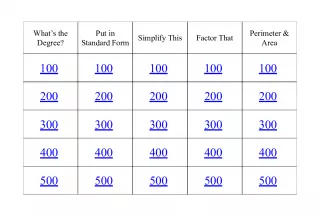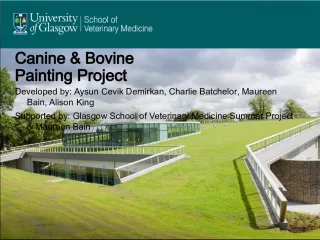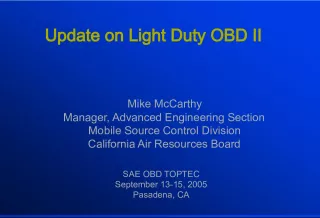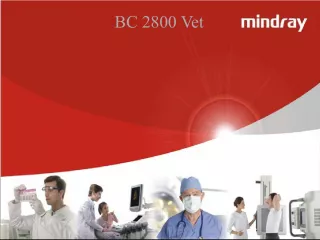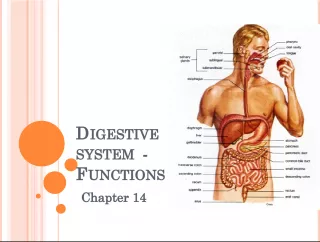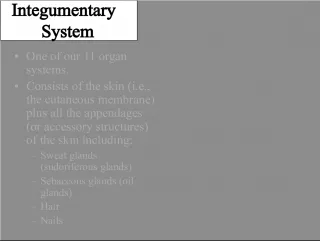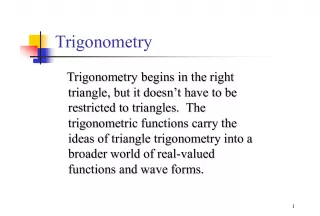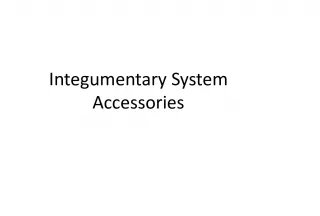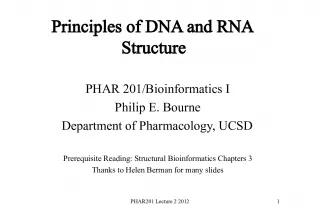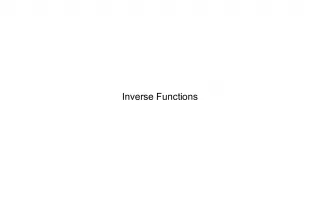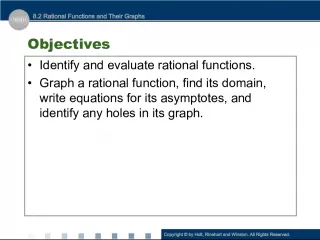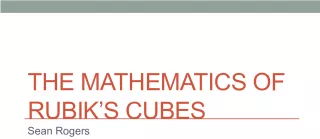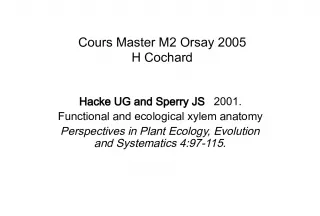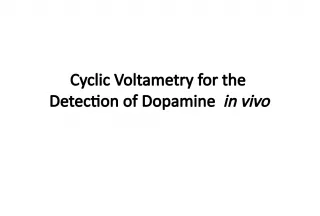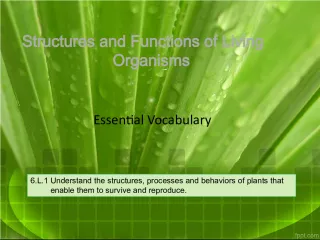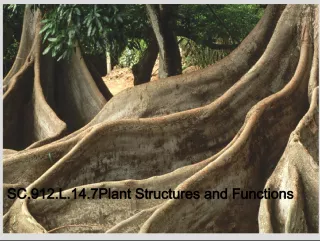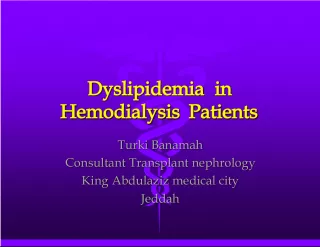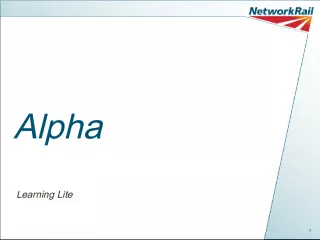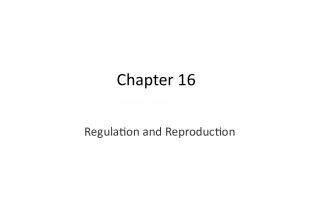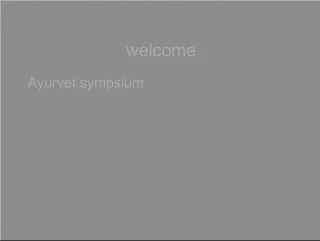The Veterinary Surgeons Board of Queensland: Structure and Functions


This lecture provides an overview of the Veterinary Surgeons Board of Queensland, its composition, and the Veterinary Surgeons Act. It covers the role of various members, including the Chairperson, Deputy Chairperson, Consumer representative, and Registered veterinarians. The lecture also highlights the significant contributions of the Registrar and Registry Office staff.
- Uploaded on | 1 Views
-
 rayford
rayford
About The Veterinary Surgeons Board of Queensland: Structure and Functions
PowerPoint presentation about 'The Veterinary Surgeons Board of Queensland: Structure and Functions'. This presentation describes the topic on This lecture provides an overview of the Veterinary Surgeons Board of Queensland, its composition, and the Veterinary Surgeons Act. It covers the role of various members, including the Chairperson, Deputy Chairperson, Consumer representative, and Registered veterinarians. The lecture also highlights the significant contributions of the Registrar and Registry Office staff.. The key topics included in this slideshow are Veterinary Surgeons Board, Queensland, structure, functions, Veterinary Surgeons Act,. Download this presentation absolutely free.
Presentation Transcript
1. The Veterinary Surgeons Board of Queensland The purpose of this lecture is to present the function and structure of the Veterinary Surgeons Board of Queensland as well as to discuss aspects of the Veterinary Surgeons Act
2. COMPOSITION OF BOARD Ministerial nominations - four Chairperson senior veterinary state government employee Deputy-chairperson currently an academic veterinarian Veterinarian Consumer representative Elected - two Registered veterinarians Registry Office - three Registrar, Deputy Registrar and Project Officer
3. VETERINARY SURGEONS ACT 1936 An Act relating to the qualifications and registration of veterinary surgeons and the regulation and control of the practice of veterinary science, and for other purposes http://www.vsb.qld.gov.au/
4. Veterinary Surgeons Act Veterinary Surgeons Board implements and interprets the Veterinary Surgeons Act regulates the practice of veterinary science in QLD acts in the public interest ensures consumer protection and animal welfare in the delivery of veterinary services. http://www.vsb.qld.gov.au/
5. Veterinary Surgeons Act Who benefits from the Act? Veterinarians Consumers Veterinary students How do they benefit Veterinarians receive exclusivity in service delivery Consumers receive quality assurance Students are assured their degree confers the knowledge and skills sufficient to gain registration as a veterinarian
6. Veterinary Surgeons Act Defines the Veterinary space Registration Veterinarians qualified, fit and proper persons to practise Restriction Only veterinarians to receive fee or reward Prescription drugs ( Health (Drugs and Poisons Regulation 1996 ) Animal welfare standards ( Animal Care and Protection Act 2001 ) Protects public expectations Consumer protection in the delivery of veterinary services. Standard of veterinary practices Complaints investigation
7. Veterinary Surgeons Act A new graduate needs a full set of Day One Skills to comply with registration requirements Acquired through your BVSc This is a partnership between you and the UQ School of Veterinary Science Assurance of the quality of the BVSc is provided through the Schools accreditation process with veterinary boards in Aus, NZ, UK, USA A graduate needs to maintain their skills for ongoing registration Continuing Professional Development (CPD)
8. Interpreting Current Best Practice
9. An outline of Day One Skills General professional skills and attributes in Communication & consultations Professional conduct, ethical responsibilities & self awareness Continuing education and adapting to change Underpinning knowledge and understanding of Structure and function Principles of disease prevention & animal welfare Etiology, pathogenesis, clinical signs, diagnosis and treatment Practical competencies and skills for Animal handling, restraint & nursing Clinical examination, diagnostic & problem solving Treatment, therapeutics & surgery
10. Role of the Board established by the Veterinary Surgeons Act 1936 sole legislative responsibility for the regulation of veterinary science in QLD acts in the public interest to ensure consumer protection and animal welfare, in the delivery of veterinary services.
11. Funding Funding for the VSB is only from annual registration fees from veterinarians in Queensland 2903 veterinarians in Queensland including 92 registered specialists There is provision, as the VSB is a regulatory body, for the state government to provide funds if required.
12. Year Findings Penalty 2012 Failed to conduct a diagnostic work-up, failed to provide appropriate treatment for an animal presented in a critical state, failed to keep adequate records of treatment. $3000 Failure to provide an adequate diagnostic work-up, failure to provide appropriate medication, failed to keep adequate records of treatment. $500 Failed to respond appropriately to the continued non-weight bearing of a horse, including but not limiting to referring or transporting to a surgical facility, euthanasing, continuous daily monitoring. $1000 Failed to keep adequate records of treatment, failure to provide to the Board anaesthetic records relating to the surgical procedure, made inappropriate choice of surgical procedure, inappropriately managed post- operative infection, concurrently administered a long acting corticoid steroid and a non-steroidal anti-inflammatory drug. $500 Declined to provide records to the Board. $1000 Used an inappropriate technique to repair a fracture, failed to keep adequate records of treatment. $500 Inadequate diagnostic work-up, inappropriate management, inadequate diagnostic follow-up. $500 Recent findings by the VSB
13. Recent findings by the VSB 2011 Negligence failed to perform a post-operative x-ray of an animal to establish cause of jaw fracture and extent of fracture to enable an informed clincal decision on treatment options Reprimand Negligence failed to respond appropriately to a report of diminished mobility in a dog Left dog in a deteriorating stage of tick paralysis unattended and unmoniotred for a prolonged period with no clinical support after withdrawal of oxygen support $500
14. Summary of complaints Year Complaint enquiries conducted Not finalised No justification insufficient evidence, insufficient cause to proceed Prima facie evidence established Proceedings heard by Board Charges referred to Vet Tribunal/QCAT 2012 (to Sept) 28 8 17(61%) 7 0 2011 48 5 32 (67%) 8 1 2010 34 4 24 (80%) 5 1 2009 24 1 21 (87%) 2 0 2008 30 0 27 (90%) 2 1 2007 22 0 19 (86%) 2 1
15. Veterinary Surgeons Act provides for Registration veterinarians qualified, fit and proper persons to practise Restriction to perform veterinary procedures Only veterinarians to receive fee or reward Standard of veterinary practices Complaints investigation Including disciplinary provisions of the Act Supply and use of prescription drugs ( Health (Drugs and Poisons Regulation 1996 ) Regulation of animal welfare standards ( Animal Care and Protection Act 2001 ) Consumer protection in the delivery of veterinary services.
16. MEANING OF VETERINARY SCIENCE Veterinary science means the science of veterinary surgery or veterinary medicine. Includes the following: a) diagnosing diseases in, and injuries to, animals, including, for example, testing animals for diagnostic purposes; b) giving advice based on diagnosis c) medical or surgical treatment of animals; d) performing surgical operations on animals; e) administering anaesthetics to animals; and f) signing or issuing certificates relating to the description, health, diagnosis or treatment of animals. However, veterinary science does not include an act done for animal husbandry or animal dentistry prescribed under a regulation not to be veterinary science.
17. RESTRICTION OF VETERINARY PRACTICE Except: If other than for fee or reward (in which case the regulating statutes are the Animal Care and Protection Act 2001; and/or the Health (Drugs and Poisons) Regulation 1996); or When studying or qualifying in veterinary science whilst under the supervision of a veterinary surgeon. It is an offence for someone who is not a veterinary surgeon to practise veterinary science.
18. a) Castrating - 1. Cattle or sheep of less than 6 months; or 2. Goats of less than 2 months; or 3. Pigs of less than 6 weeks; b) Dehorning - 1. Cattle of less than 6 months; or 2. Goats or sheep of less than 3 months ; c) Spaying cattle using the Willis dropped ovary technique; d) Tailing sheep of less than 6 months Excluded procedures
19. EXCLUDED PROCEDURES (Continued) e) Mulesing sheep of less than 1 year; f) Filing or rasping horses teeth; g) Artificial insemination of cattle, deer, goats, pigs or sheep; h) Teaching techniques about pregnancy testing of cattle by a veterinary surgeon to an owner of cattle. Note: Stomach tubing of horses, invasive dental procedures on all species, artificial insemination of a horse, and pregnancy testing of cattle remain acts of veterinary science. (Refer to Web Link acts of veterinary science)
20. REQUIREMENT FOR REGISTRATION Registration must be sought in each State or Territory before commencing practice. This is changing with National Registration NSW, Victoria first to join The awarding of a Bachelor of Veterinary Science degree does not in itself entitle the holder to practise veterinary science in any place or circumstance.
21. Only Registered Veterinarians are lawfully able to practise veterinary surgery and medicine; obtain, possess, administer, dispense or prescribe restricted and controlled drugs; gain a licence to use irradiating (x-ray) apparatus for veterinary radiography. Offences are processed through the Magistrates Court judicial system. A veterinary surgeon responsible for employing an unregistered person to practice veterinary science commits an offence with serious penalties. The professional indemnity insurance of an employer may not apply in the event of a claim where a person not a registered veterinary surgeon is the respondent in the claim .
22. How to Register Registration forms are made available to the Head of School office and can be printed from the Veterinary Surgeons Board of Queensland website. Application must be accompanied by two (2) references as to the applicants good fame and character and suitability for registration as a veterinary surgeon. (Typically references are sought from course lecturers) Application must be accompanied by proof of identity. Registration is renewable annually at end of calendar year. Pro rata fees for less than a calendar year do not apply but registration issued after 1 November are effective until the end of the following calendar year.
23. SPECIALIST REGISTRATION A registered veterinary surgeon is entitled to be registered as a veterinary specialist if the veterinary surgeon satisfies the Board that a) he or she has gained special skill in the veterinary specialty with respect to which he or she applies to be registered; b) the special skill was gained in practising veterinary science for a period of at least 5 years; and c) he or she is the holder of a degree, diploma or other qualification recognised by regulation that relates to that veterinary specialty.
24. PROFESSIONAL MISCONDUCT The term misconduct in a professional respect cannot be limited to specifics, but the Act recognises some common examples such as - i. Negligence or incompetence in the practice of the profession ii. Addiction to alcohol or drugs iii. Signing in a professional capacity, an incomplete, false or misleading certificate iv. Failure to comply with or contravention of any law with respect to scheduled drugs v. Fraud or deception vi. Conviction of an offence involving cruelty to animals
25. MISCONDUCT (Continued) vii. Conducting a veterinary practice under a business name at premises not approved for the range of veterinary services provided thereat. viii. Failure to comply with conditions of a premises approval and failure to keep premises and equipment in clean and sanitary condition ix. Failure to keep records in the prescribed form x. Directing or allowing a person who is not a veterinary surgeon to practise veterinary science on an animal under the veterinary surgeons care
26. COMPLAINTS PROCEDURE i. Complaint by owner must be made in writing to the VSB online or by letter ii. Complaint is assessed by the Registrar must be relevant not vexatious or financial (VSB does not adjudicate on fees) iii. If the complaint is considered valid the Registrar formally requests the clinical records of the case. iv. After receiving the records the Veterinarian is advised of the complaint and asked for comment and also for a copy of their CE records v. The response of the Veterinarian is then forwarded to the complainant for comment
27. COMPLAINTS PROCEDURE (continued) vi. All documents are then distributed to the Members of the VSB for review vii. The VSB meets every 4-6 weeks for one full day viii. Complaints are reviewed and assessed, on occasion further information may be requested, from the veterinarian or owner or a review of the case by an expert in that field ix. After assessing the case the VSB makes a decision
28. Findings that can be imposed by the VSB of Queensland Not guilty of professional misconduct or Guilty of professional misconduct in which case a penalty may be imposed i. No penalty ii. Letter of censure / warning iii. Fines of up to 10 units (A$100 per unit can be amended by the VSB) iv. Recommendations for CPD / CE in specific areas v. Request for records on an ongoing basis The VSB CANNOT remove a Veterinarian from the Register of the matter is considered serious enough for removal from the Register then the VSB refers the case to Queensland Civil and Administrative Tribunal
29. QUEENSLAND CIVIL AND ADMINISTRATIVE TRIBUNAL (QCAT) QCAT has jurisdiction to conduct disciplinary proceedings involving allegations of professional misconduct by a veterinary surgeon determined by the Board to be of a serious nature. For QCAT proceedings, the tribunal is constituted by (a) 1 legally qualified member; and (b) 2 members who are veterinary surgeons. Only QCAT has the jurisdiction to order that a veterinary surgeons name be removed or suspended from the Register of Veterinary Surgeons.
30. CONTINUING VETERINARY EDUCATION (CVE) CONTINUING PROFESSIONAL DEVELOPMENT (CPD) 1. Veterinarians are lawfully required to keep a record of all CVE/CPD undertaken; 2. CVE/CPD is not a mandatory condition for renewal of registration to practice; 3. The Board may rely on CVD/CPD records to evaluate competency in the event of a complaint investigation and may seek CVE/CPD undertakings as a result
31. PROFESSIONAL ETHICS AND CODE OF PRACTICE 1. Ethical behaviour to accord with AVA Code of Professional Conduct. 2. AVA Code of Professional Conduct is not established by statute. 3. The Board may rely on the codes, policies and expertise of the AVA as the peak professional body representing veterinarians in determining standards of practice and conduct.
32. STATUTORY RESPONSIBILITIES Veterinary Premises Local authority approval required Board approval required Minimum standards apply depending on range of services Courtesy Title Doctor Nothing prevents a registered veterinarian using the title Additional Qualifications Additional qualifications not relative to veterinary science may be used by veterinarians but always after the primary registrable veterinary science degree and post graduate veterinary qualifications. Primary Statutory Responsibilities to: Veterinary Surgeons Act 1936 Health (Drugs and Poisons) Regulation 1996 Radiation Safety Act 1999 (Use and Possession) The Animal Care and Protection Act 2001
33. ADVERTISING Limited only by the provisions of the Commonwealth Trade Practices Act 1974 and Queensland Fair Trading Act 1989 (section 38 A person shall not, in trade or commerce, engage in conduct that is misleading or deceptive or is likely to mislead or deceive ) and AVA ethical guidelines. Veterinary surgeons names and qualifications must be displayed at veterinary premises. AVA Code of Professional Conduct Advertising:- must not be false, misleading or deceptive; must not seek personal advantage at the expense of professional colleagues; and must not lower the status of the veterinary profession in the eyes of the public.
34. AVBC - Oversight of Australia & NZ Standards The Australasian Veterinary Board Council Inc gives advice and makes recommendations to the Veterinary Surgeons Boards in Australia and New Zealand in relation to: 1. accreditation of veterinary schools and of courses leading to a degree in veterinary science or medicine; 2. assessment of the suitability of persons with foreign veterinary qualifications for practice in Australia and New Zealand 3. uniform criteria for recognition of qualifications for registration; 4. advice on general and specialist registration 5. harmonisation of the standards, regulations and quality assurance of veterinary services provided to the community. The veterinary boards of Australia and New Zealand are members of the AVBC.
35. Accreditation of Veterinary Schools is Assurance for; Future veterinary students that they will meet a threshold competency for entry into practice Employers that graduates have achieved specific learning goals & are prepared to enter professional practice The public That public health and safety concerns are being addressed The veterinary profession That the science and art of veterinary medicine are being advanced through contemporary curriculum Universities That their programs measure satisfactorily against national standards and their own mission and goals http://www.avma.org/education/cvea/default.asp
